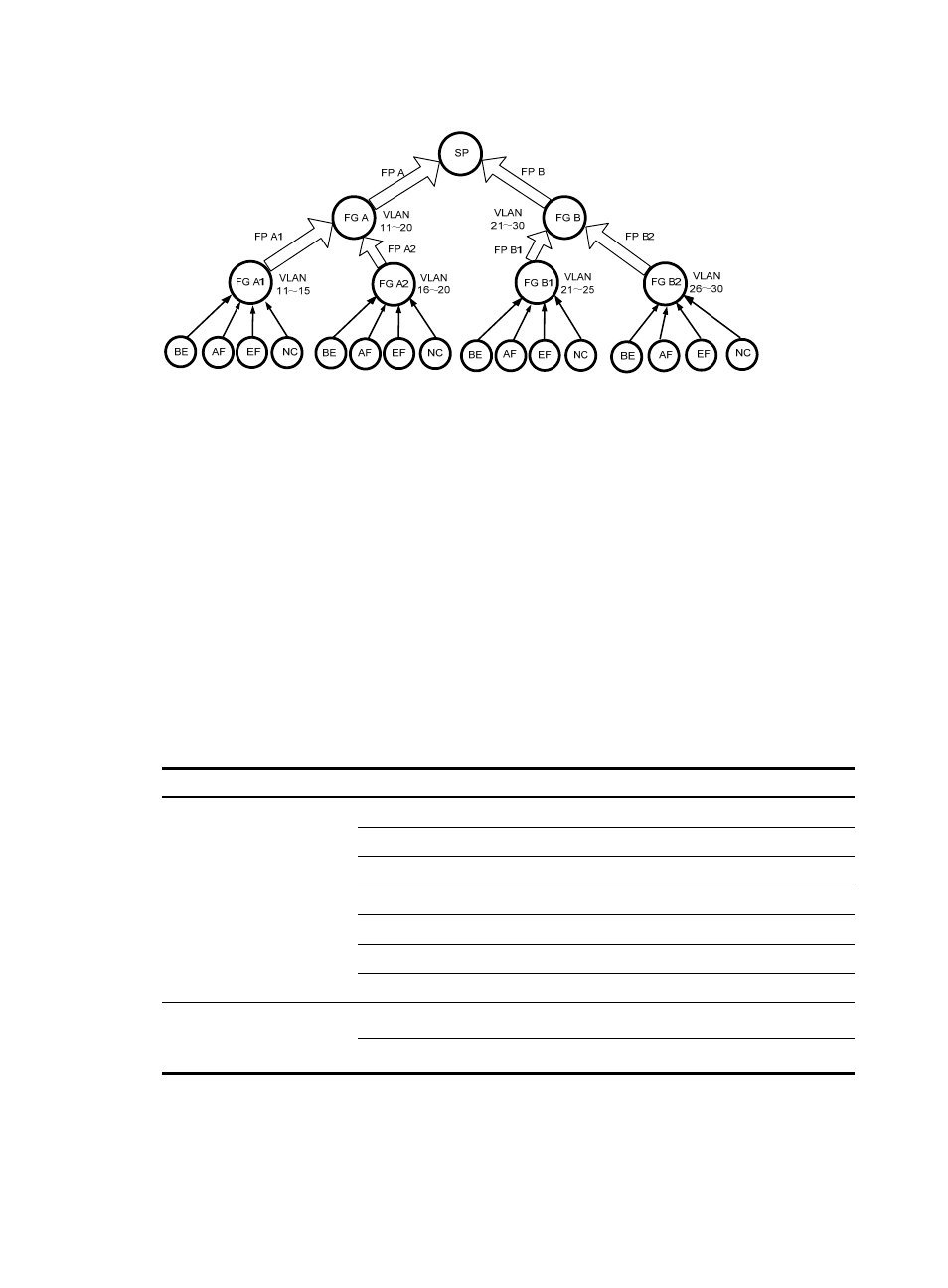H3C Technologies H3C SR8800 User Manual
Page 83

74
Figure 26 HQoS configuration structure
As shown in
, the HQoS configuration procedure goes through the following phases:
1.
Create scheduling entities and configure forwarding profiles for them. More specifically, create
nodes forwarding group A, forwarding group A1, forwarding group A2, forwarding group B,
forwarding group B1, and forwarding group B2 and configure traffic actions forwarding profile A,
forwarding profile A1, forwarding profile A2, forwarding profile B, forwarding profile B1,
forwarding profile B2.
2.
Associate the scheduling entities with the forwarding profiles. More specifically, nest these nodes
(such as nesting forwarding group A1 and forwarding group A2 in forwarding group A, nest BE,
AF, EF, and NC in forwarding group A1) and then associate each node with its forwarding profile
(such as associating forwarding group A with forwarding profile A). In this phase, the nodes are
organized into a tree.
3.
Instantiate forwarding groups. More specifically, configure match criteria for each node (for
example, assign packets of QoS-local-ID 11 through QoS-local-ID 20 to forwarding group A).
4.
Apply the organized scheduler policy to an interface.
Complete the following tasks to configure HQoS:
Task Remarks
Configuring an forwarding class
Optional
Optional
Configuring an forwarding profile
Required
Configuring an forwarding group
Required
Configuring an scheduler policy
Required
Instantiating an forwarding group
Required
Applying an scheduler policy to an interface
Required
Copying an forwarding
group or scheduler policy
Optional
Optional
